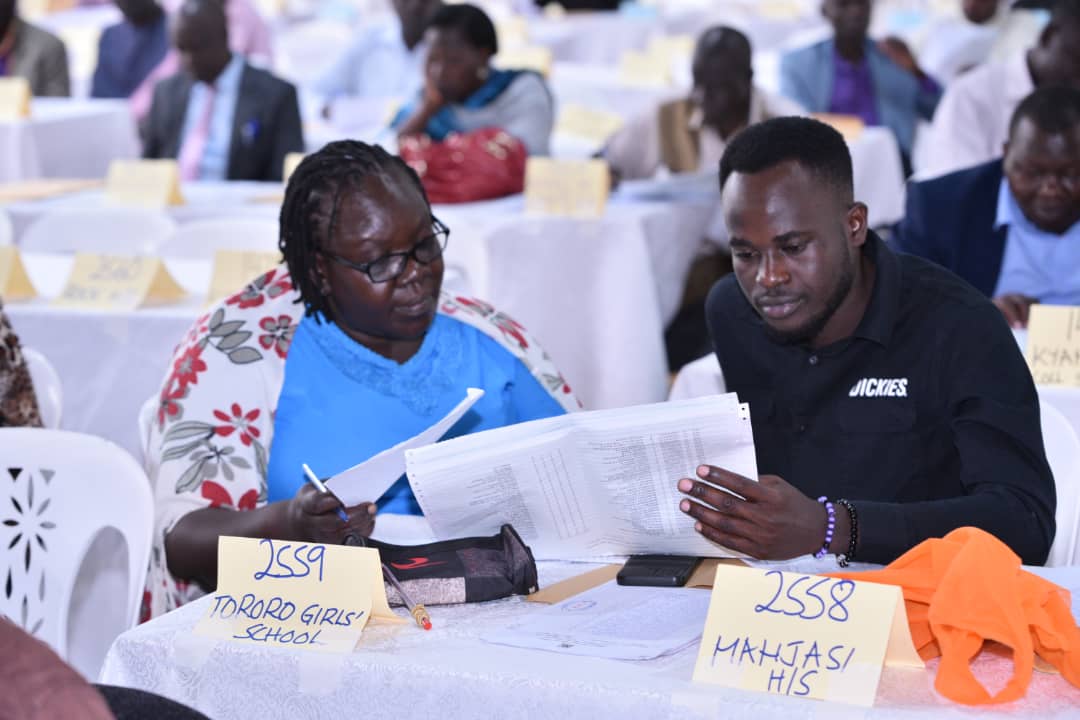The Ministry of Education and Sports is planning to carry out a survey to ascertain the accurate number of learners that individual schools can admit.
The move is part of the Ministry’s broader strategy to realign and restore public confidence in the national selection and placement process, which annually places students in S.1 and S.5.
Dr. Jane Egau, the Chairperson of the National Selection and Placement Committee, acknowledged the existing shortcomings in the process designed to facilitate merit-based placement in schools of the students’ choice.
“The committee has identified a method employed by certain schools to manipulate the system. They intentionally submit lower-than-accurate capacity figures to the committee but subsequently admit three times the reported number once back at their school,” said Dr. Egau.
The school’s capacity assessment encompasses various crucial indicators, including staffing levels, classroom availability, and dormitories for the boarding section.
“Starting this year, they have committed to conducting a survey to accurately determine the capacity of all schools. Based on the evidence gathered from this survey, adjustments will be made to the intake capacity next year,” she added.
The national selection process, once prestigious as the sole means of placing students after a certain educational level, has lost its significance. Backdoor admissions, conducted within schools, have become prevalent.
Many schools now prefer selecting only a few students through the national process and admit the rest at the school level. For example, a school allocated around 200 students in the national selection for S.1 may end up having over 500 students in the class, with the additional 300 admitted at the school level.
Interestingly, during the national selection, the cutoff points are raised to limit admissions. However, in school-based admissions, students with lower grades than those admitted through the national selection are accepted. This creates a paradox as students who could have been selected based on merit and performed better are left out.
This year, several traditional schools announced cutoff points of 5 or 6 aggregates immediately after the release of exam results. It’s worth noting that school-based admissions may accept students with higher aggregate scores, like 9 aggregates. The public has raised concerns over the years, but the Ministry of Education had not taken any action, turning the national selection into a ceremonial event.
While the Ministry is initiating a survey this year, many individuals, including educators, question why the Ministry doesn’t utilize the annual school data it collects to address systemic issues. The ministry recently introduced Education Management Information System (EMIS), a tool gathering comprehensive data on student enrollment, teachers, infrastructure, equipment, and more.
However, it appears that this valuable information has not been effectively utilized. Through this system, the ministry could easily track the number of students enrolled in specific schools, providing a potential solution to existing challenges.
Dr. Egau acknowledged the fundamental role of EMIS in the process. She mentioned that after their survey is completed, EMIS will be utilized to monitor the intake of each school and that any schools found in violation will be handled accordingly.
Ismael Mulindwa, the acting Permanent Secretary, highlighted that the exercise’s purpose is to ensure equity and fairness, especially in publicly funded schools. He emphasized that the system aims to save parents from the hassle, expenses, and time wastage of searching for school placements. However, it seems that the existing challenges may be attributed to loopholes created by school leaders.
“The Ministry is committed to taking the process seriously. Conducting the exercise with integrity is crucial to dispelling public concerns regarding fairness and merit in the education system,” said Mulindwa.
Meanwhile, in this year’s selection and placement process, most of the schools have maintained their cutoff points. Gayaza High School has retained the cutoff at 5 aggregates, Mbarara High School at 7 aggregates, Iganga SS at 9 aggregates, Abim SS girls at 26 and boys at 19 aggregates, Ntare School at 6 aggregates, Bududa SS at 28 aggregates for all, and Gombe SS at 8 for girls and 7 aggregates for boys.
King’s College Budo has maintained the cutoff at 5 aggregates for girls and slightly lowered it for boys from 4 to 5 aggregates. Lubiri SS has maintained the cutoff at 9 for girls and raised it for boys from 9 to 8 aggregates. Masaka has increased the cutoff for boys from 11 to 9 aggregates and for girls from 13 to 12 aggregates.
However, a few schools have lowered their cutoff points. For example, Kawempe Muslim reduced the cutoff from 6 to 7 for boys and from 7 to 8 for girls. St. Peter Nsambya decreased the cutoff from 8 to 7 aggregates, and Nabisunsa also lowered the cutoff from 6 to 7 aggregates.
This year, the selection and placement process strive to accommodate 515,160 students, with each of the 4293 participating schools admitting an average of 120 students.
As per guidelines, students scoring aggregates between 4 and 24 in the Primary Leaving Examination (PLE) are selected and placed based on their preferences.
Given that 648,662 students qualified for admission to senior one, approximately 20 percent, or 133,502 students, may not secure placements by the end of the activity. The Ministry of Education asserts that these remaining students will be absorbed by schools that did not directly participate in the process.
URN.

